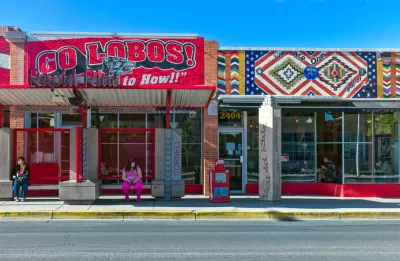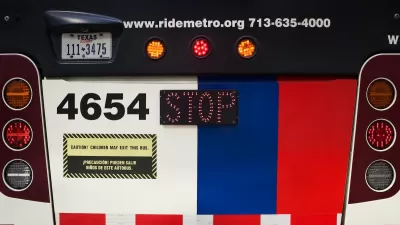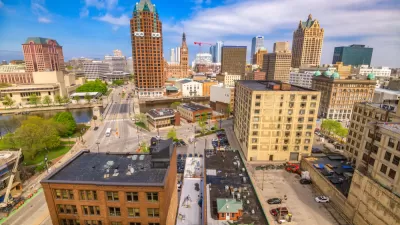Most buses are not empty enough to justify substitution of smaller vehicles.

One common argument against conventional public transit (and in favor of subsidizing taxicabs or some other type of transit based on small vehicles) is that because city buses are often half-empty, a transit agency could accommodate the same number of riders in a taxicab or dial-a-ride van. I am instinctively skeptical of this argument, because I know that transit agencies are usually quite willing to cut the lowest-performing routes at the first sign of economic distress.
But rather than relying solely on my instinctive prejudices, I decided to look for some actual data from bus agencies. I googled something like "bus ridership by route" and the first transit agency that came up was that of Albuquerque—hardly a transit-oriented city.* (See ABQ Ride for route-by-route data [pdf].)
First I looked at the city’s most heavily traveled local** route, the Central Avenue route (Route 66). It runs every 15 minutes for most of the day, for a total of about 65 one-way trips in each direction (or 130 per day). The same route has 1.7 million riders on weekdays, for a total of a little over 6500 riders per weekday. This means that the average one-way trip has about 50 riders (6500/130). If you substituted a dozen four-passenger taxicabs or seven seven-passenger minivans for Route 66, the city would have a lot of extra vehicles on the road, creating a lot of extra congestion.
Then I looked at a local* route with roughly average ridership levels, the Wyoming Boulevard route (Route 31). The Wyoming route runs every 30-45 minutes for about 13 or 14 hours per weekday, for a total of about 45 trips (counting northbound and southbound as separate trips). This route has just over 162,000 weekday riders, or 640 per weekday, or 14 riders per one-way trip. If you assume that a taxicab accommodates four riders, the city would need three or four taxicabs to equal the bus’s ridership. Assuming that the taxicabs were more than one-quarter as long as the bus, they would take up more space, thus adding to road congestion. In addition, the city would have to pay four taxi drivers instead of one bus driver; it is unclear to me whether the savings from smaller vehicles would outweigh the additional labor cost.
What about the city’s lowest-ridership local route, the 12th Street (36/37) route? This route has only 36,000 riders on weekdays, or 138 per weekday. But it only runs once an hour during the day, which means it only has 24 trips per day. So this bus typically has only six riders per trip. For a route this small, a taxicab or minivan-size vehicle might make sense. But this is the lowest-ridership route in a low-ridership city, so I am not sure of the broad relevance of this situation.
*According to the American Community Survey, only 2.1 percent of Albuquerque residents use public transit to get to work.
**That is, not counting express routes that tend to run only a few times a day or bus rapid transit that runs more frequently.

Planetizen Federal Action Tracker
A weekly monitor of how Trump’s orders and actions are impacting planners and planning in America.

The Simple Legislative Tool Transforming Vacant Downtowns
In California, Michigan and Georgia, an easy win is bringing dollars — and delight — back to city centers.

San Francisco's School District Spent $105M To Build Affordable Housing for Teachers — And That's Just the Beginning
SFUSD joins a growing list of school districts using their land holdings to address housing affordability challenges faced by their own employees.

In More Metros Than You’d Think, Suburbs are Now More Expensive Than the City
If you're moving to the burbs to save on square footage, data shows you should think again.

The States Losing Rural Delivery Rooms at an Alarming Pace
In some states, as few as 9% of rural hospitals still deliver babies. As a result, rising pre-term births, no adequate pre-term care and "harrowing" close calls are a growing reality.

The Small South Asian Republic Going all in on EVs
Thanks to one simple policy change less than five years ago, 65% of new cars in this Himalayan country are now electric.
Urban Design for Planners 1: Software Tools
This six-course series explores essential urban design concepts using open source software and equips planners with the tools they need to participate fully in the urban design process.
Planning for Universal Design
Learn the tools for implementing Universal Design in planning regulations.
Smith Gee Studio
City of Charlotte
City of Camden Redevelopment Agency
City of Astoria
Transportation Research & Education Center (TREC) at Portland State University
US High Speed Rail Association
City of Camden Redevelopment Agency
Municipality of Princeton (NJ)






























